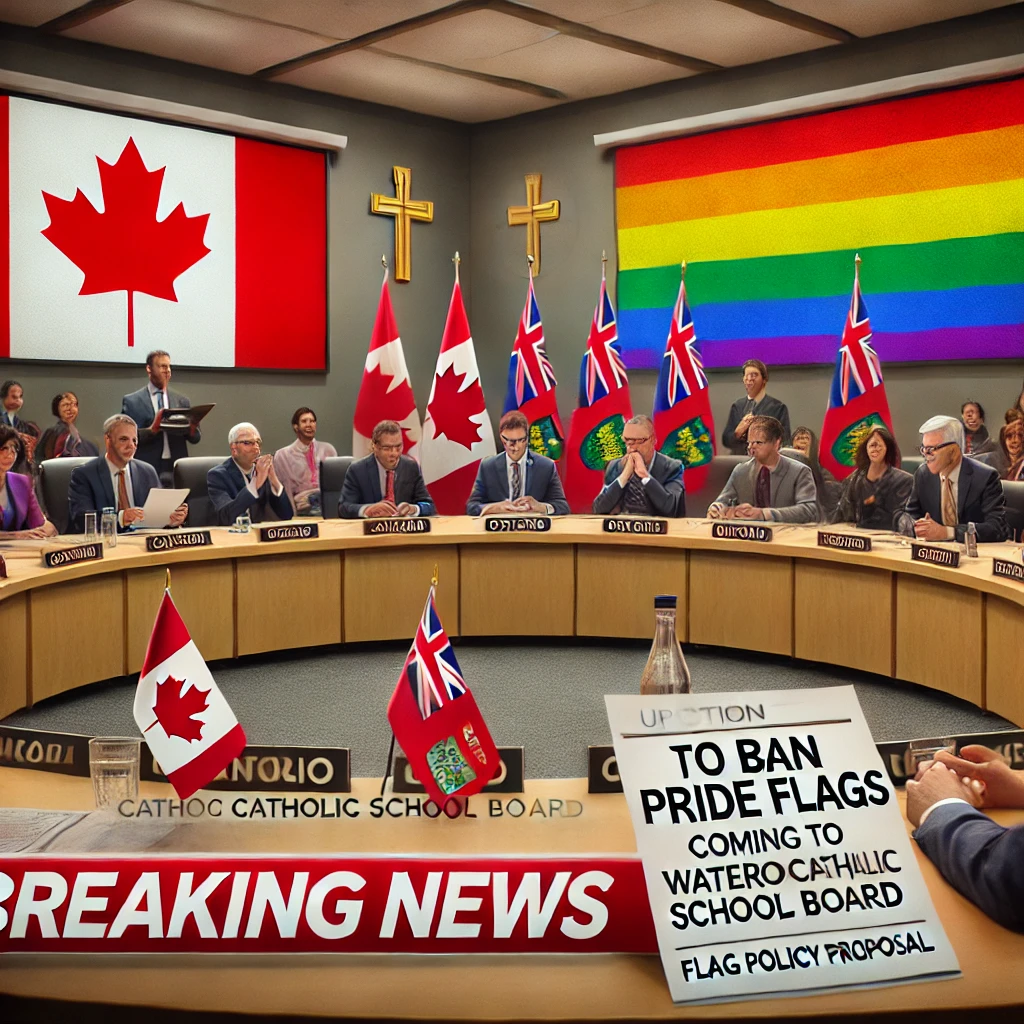It’s not just cloth on a pole. It’s symbolism, it’s identity, it’s community—and soon, it may become a source of division for the Waterloo Catholic District School Board (WCDSB). On Monday, March 24, the board will discuss a motion that could drastically change what flags are flown at its schools.
The motion, brought forward by Trustee Conrad Stanley, seeks to ban rainbow, pride, and other so-called “political symbols” from being displayed on school property. If adopted, only three flags would be permitted year-round: the Canadian flag, the Ontario flag, and the Waterloo Catholic District School Board’s own banner.
Sound straightforward? Not quite.
The motion argues that flags like the rainbow and progress pride flags are “international identity-based” symbols that have become, in the board’s words, “divisive and unpopular.” It also references “ongoing complaints, protests, and delegations” from parents and ratepayers within the Catholic community as the basis for this proposed policy change.
Now, here’s the kicker: the motion claims that flying only the Canadian and Ontario flags is the most inclusive option—because these, according to its reasoning, represent “everyone equally.”
But let’s pause here and ask the obvious: When did visibility become political?
This issue has sparked emotional debate across Ontario and beyond. For some, flying the pride flag is an affirmation—a simple yet powerful gesture that says: You belong here. For others, the growing presence of identity-based symbols in public institutions feels like a shift away from traditional values.
A Fictional Yet Familiar Anecdote
Ms. Davis, a high school teacher in Kitchener, still remembers the day her student, Jordan, came out during Pride Month. The pride flag outside the school that morning wasn’t just decoration—it was, in Jordan’s words, “the reason I felt safe enough to speak.”
Now imagine telling that student that symbol no longer has a place here. What message does that send?
What Comes Next?
The motion will first be debated during the March 24 meeting. If it proceeds, a final vote is scheduled for April 28. If passed, the board’s flag policy would be locked to three: Canada’s, Ontario’s, and WCDSB’s.
Debate will likely be heated. Emotions will run high. Voices will clash.
But behind the parliamentary procedure, there’s a bigger conversation at play—one about identity, inclusion, and whether a piece of fabric in the wind can do more than signal allegiance. Whether it can also offer hope.
To quote George Carlin (with a twist of irony): “Symbolism is okay as long as it doesn’t get in the way of the real thing.” And for many students, parents, and educators—this is the real thing.
Stay tuned.



